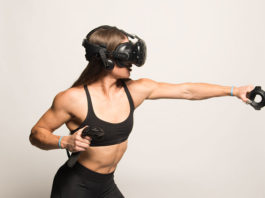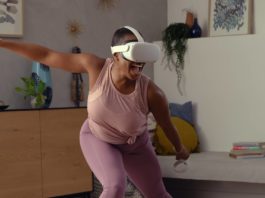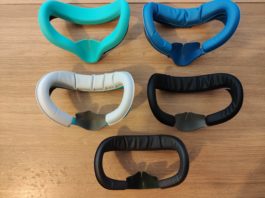When I initially started streaming VR gameplay across social media, there was no clear-cut guide on how to show off the biometrics coming in from my Apple Watch. Now there is.
As a streamer, you may be looking to spruce up your PC VR game streams by including biometric visual data (such as heart rate and calorie burn) for your viewers to follow. If you own an iPhone (or iPad) and a Bluetooth-enabled fitness tracker, you can quite easily push your metabolic data to your live audience in real time.
It’s not as complicated as it first seems, and it can potentially make a VR game stream more interesting—especially while showcasing a physically active game like Beat Saber, Audica, or one of the many other titles we cover here at VR Fitness Insider. Are you curious about my process? Here’s what you need to get started:
Step 1. Set Up Your Tracking App
For this example, let’s say I’m using my Polar H10 and I’m recording my fitness results using the Polar Beat app. If I were going with a different tracker, such as my Apple Watch, I’d go for Under Armour Record instead. On that note, both apps work identically once they’re up and running.

Step 2. Let Your Tracking App Speak to Apple Health
Generally, your Apple Watch will already do this. Other trackers will need you to go in and complete this step. Navigate to your Apple Health app, then to Sources, and find your tracking app of choice. Then switch on all available “Write Data” toggles.

Step 3. Install AirServer on Your PC
AirServer is a piece of software that lets you mirror your phone or tablet’s screen to a non-Apple device. There are others of equal quality, but this is the one I ended up paying for and using. Once you activate the executable, you should find a hidden icon on the bottom right corner of your desktop designating that AirServer is ready to roll.
Step 4. Cast Your Tracking App to AirServer
Navigate to the dashboard on your iOS device and select ‘Screen Mirroring’. As long as both your PC and your iOS device are on the same WiFi network, you should have the option to mirror from your device to your PC.

Step 5. Add the AirServer Window to Your Stream Composition
You can do this in both popular broadcasting programs—OBS Studio and Streamlabs OBS. For either program, you’ll want to add a source called a ‘Window Capture’. From there, find the AirServer Window and make sure that the Window Capture layer is designated to only show that window.

Next, drag the window to the top of the list so that it’s at the forefront of the composition. Once you’ve added the window, navigate to Filters to apply color correction and a crop filter.

Adjust both filters until the window looks how you’d like it to appear in the live stream.

Unfortunately, I don’t have an Android device with which to reproduce this method. However, what I’ve detailed in this guide will help out VR streamers who own iPhones and other Apple devices. Any iOS user who’d like to front some scientific metadata to prove that playing a VR game can, in fact, be considered exercise, is welcome to lean on this guide.
If you’re curious about what’s required to begin streaming, period, I would recommend that you take a peek at this wonderful how-to guide on the basics of VR streaming, courtesy of David Jagneaux over at UploadVR.
Do you already cast biometrics from a fitness tracker while playing and/or working out in VR? Let us know in the comments.



